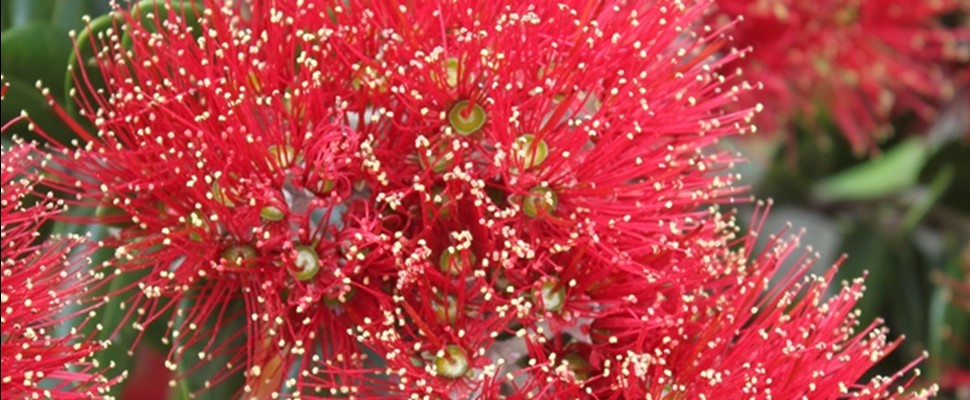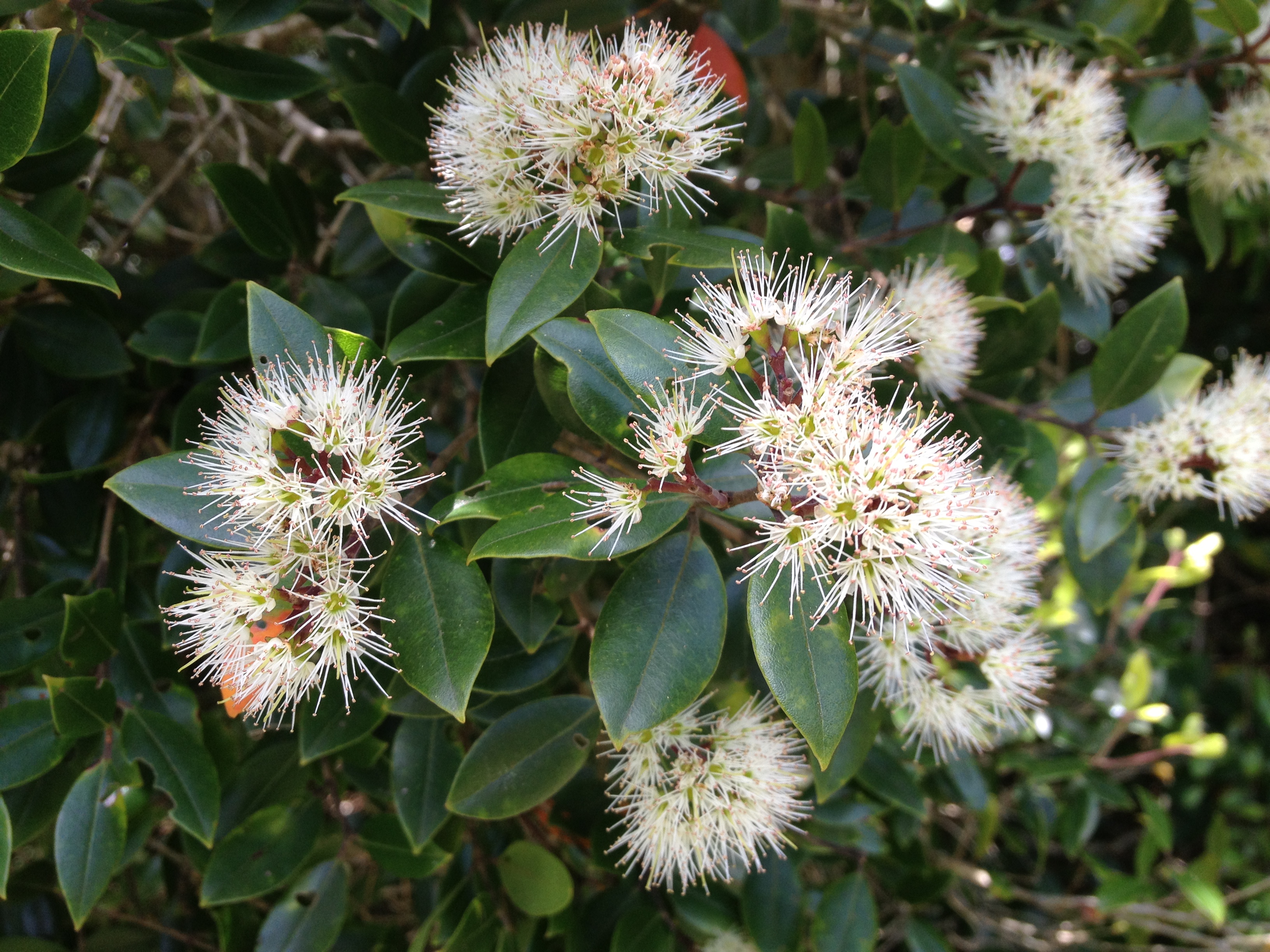
Sentinel survey for myrtle rust
Monitoring natives and exotics for myrtle rust
Myrtle rust (Puccinia psidii s.l.) is a fungus that affects plants in the family Myrtaceae. It is a plant disease from South America and didn’t really interest us here in New Zealand until it arrived in Australia about 5 years ago. Since then experts think it is just a matter of time before it gets to NZ, from Australia, by wind. Makinson (2014) provides a good summary of the situation in Australia. Myrtaceae species in NZ include the much loved pohutukawa as well as the ecologically important revegetation manuka and ‘kanuka’. The species at highest risk may be Northland’s Rata Moehau (Metrosideros bartlettii) already very threatened by possum browse. Searching NZPCN’s database for “Myrtaceae” allows you to see a full list of 28 plants that might get myrtle rust, and may be adversely affected by it, if it gets to NZ.

Metrosideros bartlettii, rata moehau
Five NZ native plants are affected by myrtle rust in Australia: Ramarama (Lophomyrtus bullata), a Lophomyrtus cultivar (Lophomyrtus x ralphii); two pohutukawa trees (Metrosideros kermadecensis and Metrosideros excelsa) and a climbing rata (Metrosideros carminea). Others are not commonly grown in Australia but because NZ shares several Myrtaceae genera with Australia we know that genera such as Kunzea, Leptospermum, and Syzygium are affected. This means Neomyrtus pedunculata is the only NZ native plant genus that we have no data on Myrtle Rust susceptibility.
Earlier this year (2016) Myrtle Rust got to Tasmania and to date it’s only been found on cultivars of NZ Lophomyrtus which is a common hedge plant in gardens. Australian biosecurity websites list the cultivars Black Stallion, Red Dragon, Rainbow’s End and Krinkly as affected.
At Auckland Botanic Gardens we have been officially “waiting for myrtle rust” by conducting a monthly sentinel survey since August 2014. Sentinel surveys target plants with a high likelihood of getting a disease to enable early detection of new pests and diseases. The survey involves checking 25 native and exotic Myrtaceae plants, or groups of plants, for signs of rust in a monthly survey. We’ve included Rata Moehau (Metrosideros bartlettii) and Great Barrier Kanuka (Kunzea sinclairii) in the survey. We may or may not be the first to detect Myrtle Rust, but the survey means it will be possible to at least document which species we notice it on first, how fast it spreads at the Gardens, whether it has any preferred hosts and maybe, through time, what impacts it has. It’s one survey where you definitely don’t want to find the thing you are looking for!
In the meantime we are also seed-banking local wild populations of Lophomyrtus as we find them and collecting every one of the new Kanuka species so they can be part of the sentinel network too.
References
Makinson 2014. Myrtle Rust – What's Happening?. Australian Plant Conservation 23(1) June-Sept 2014: 13—15.